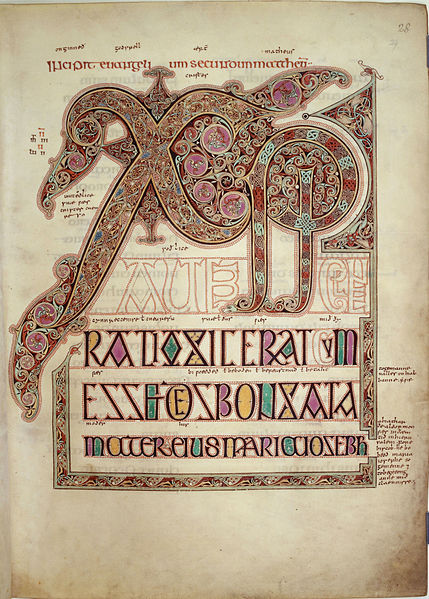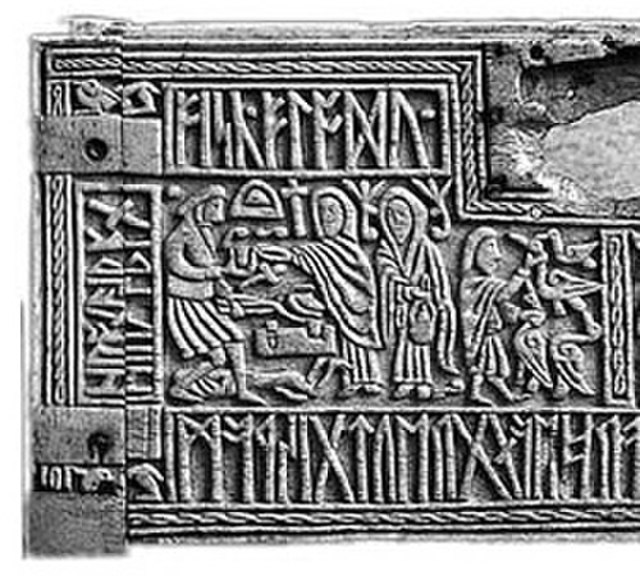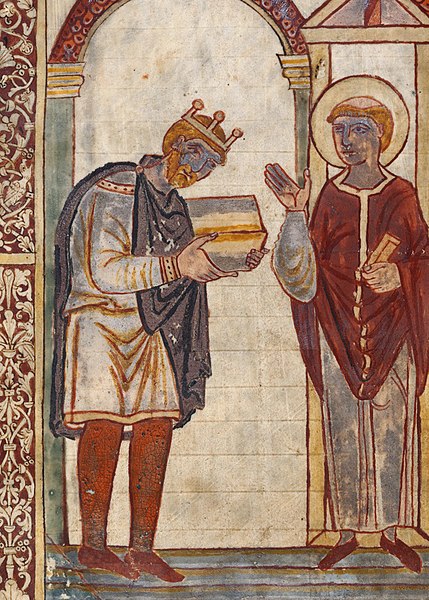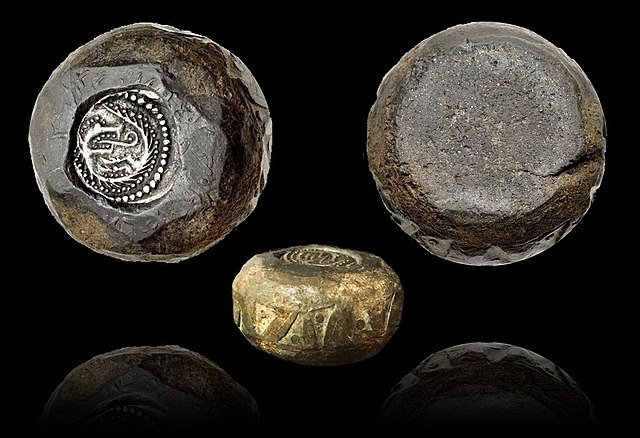Anglo-Saxon paganism, sometimes termed Anglo-Saxon heathenism, Anglo-Saxon pre-Christian religion, or Anglo-Saxon traditional religion, refers to the religious beliefs and practices followed by the Anglo-Saxons between the 5th and 8th centuries AD, during the initial period of Early Medieval England. A variant of Germanic paganism found across much of north-western Europe, it encompassed a heterogeneous variety of beliefs and cultic practices, with much regional variation.
The right half of the front panel of the 7th-century Franks Casket, depicting the Anglo-Saxon (and wider Germanic) legend of Wayland the Smith
An early 20th-century depiction of Bede, who provides much of the textual information on Anglo-Saxon paganism. Painting by James Doyle Penrose.
Roseberry Topping in North Yorkshire, once known as the 'Hill of Óðin'
A 1908 depiction of Beowulf fighting the dragon, by J. R. Skelton.
The Anglo-Saxons were a cultural group that inhabited much of what is now England in the Early Middle Ages, and spoke Old English. They traced their origins to Germanic settlers who came to Britain from mainland Europe in the 5th century. Although the details are not clear, their cultural identity developed out of the interaction of these settlers with the pre-existing Romano-British culture. Over time, most of the people of what is now southern, central, northern and eastern England came to identify as Anglo-Saxon and speak Old English. Danish and Norman invasions later changed the situation significantly, but their language and political structures are the direct predecessors of the medieval Kingdom of England, and the Middle English language. Although the modern English language owes somewhat less than 26% of its words to Old English, this includes the vast majority of words used in everyday speech.

Page with Chi Rho monogram from the Gospel of Matthew in the Lindisfarne Gospels c. 700, possibly created by Eadfrith of Lindisfarne in memory of Cuthbert
King Æthelstan presenting a gospel book to (the long-dead) St Cuthbert (934); Corpus Christi College, Cambridge MS 183, fol. 1v
The Oseberg ship prow, Viking Ship Museum, Oslo, Norway.
Anglo-Saxon-Viking coin weight. Material is lead and weighs approx 36 g. Embedded with a sceat dating to 720–750 AD and minted in Kent. It is edged with a dotted triangle pattern. Origin is the northern Danelaw region, and it dates from the late 8th to 9th century.








